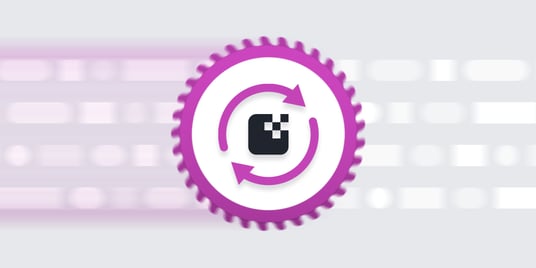Get a Free Trial
Creating, executing, and maintaining reliable tests has never been easier.
This week, I had the honor of presenting at The QA Financial Global Digital Forum, an exciting day-long conference focused on software quality in financial services. As a long-term partner for major financial services companies like NCR and Arch Insurance, mabl is deeply committed to enabling quality software in this critical sector with intelligent test automation.
Unsurprisingly, a major topic of discussion was digital transformation (DX). Previously considered a strategy for long-term resiliency, the pandemic has pushed the financial services sector to rapidly deploy DX initiatives to deliver quality, digital-first customer experiences.
Quality is the key to successful DX
The scale of the challenge is immense: 80% of consumers primarily access their bank account via mobile app and 61% say they will leave a bank over a poor customer experience. A poor quality app or website will directly impact an organization’s ability to attract and retain customers, particularly in the mobile-first world.
Mobile banking: a multigenerational experience!
Fundamental to any DX initiative is ensuring a quality customer experience across the entire user journey, particularly as pressure increases to demonstrate quantifiable impact on revenue and growth goals. Customers are more likely to spend more at a company with a seamless UX, as well as champion a company that builds delightful experiences.
Let’s start by outlining a typical customer journey: a user receives an email from a company with an attached PDF. The user then opens the company’s mobile website or app, only to pick up their task or purchase (using an API to connect to the digital payments processor) later on their computer. The connecting thread for customers as they navigate this journey? Quality engineering enabled by test automation.
Scaling test automation to cover the new CX
Software testers most likely read that hypothetical customer journey and thought “great, more ground to cover. Luckily I have zero spare time.” And they would have a serious point: many testing teams, particularly those relying on manual testing, are managing increasingly large, complex workloads on faster deployment schedules leaving little time to introduce new test areas like email testing or API testing, even as DX projects prioritize expanding to new communication platforms and updating digital channels.
To manage these new projects, testing teams are turning to two familiar technologies: cloud and test automation. By shifting testing to the cloud, quality teams have access to flexible testing tools that enable greater maneuverability for high-velocity software development, scaling test volume to meet demand in response to different stages of the SDLC. Cloud also offers improved performance and the ability to harness data to continuously improve data-driven strategy.
But cloud comes with security challenges, particularly for a sector where 70% of providers have experienced a successful cyber attack in the last year. Organizations that handle sensitive financial data need to ensure their team follows best practices by implementing extra security measures for cloud-based test automation, such as requiring MFA, activating granular access controls, and working with test automation solutions that are SOC II certified.
Build an end-to-end test strategy that reflects the true UX
Customers don’t experience applications or websites in silos, and a testing strategy that treats every aspect as individual components will miss critical defects that damages the user experience. While this is hardly ideal in any circumstance, the ante is heightened in financial services as customers that can’t access their bank accounts or complete a transaction are likely to switch to a competitor.
Software is interconnected, so an effective testing strategy needs to be as well. Quality owners must develop an end-to-end testing strategy to test external documents like PDFs and email functionality. PDFs need to be tested to validate their content and track visual changes over time, particularly when sending sensitive financial data or receipts. Email can be similarly tested to ensure that their content, attachments, and links work as expected.
Though outside the traditional realm of testing, consider how many customers rely on email and PDFs to communicate with financial services and e-commerce brands, particularly as tax season approaches. Consumers rely on regular, accurate email to remain informed of their finances and updated on the status of recent orders. If a brand routinely sends updates with broken links and unreadable documents, customers will lose trust and switch to an alternative company.
As simple as A-B-C-D
The QA Financial Digital Forum couldn’t have come at a more appropriate time as brands reflect on one year managing the radical changes caused by the COVID-19 pandemic. In financial services and e-commerce, the shift to mobile-first was a chance to redefine digital transformation projects that supported valuable connections with consumers across mobile apps, websites, and email. Implementing test automation enables quality teams to evolve their testing strategy to ensure quality across the entire customer experience. With better quality software, digital transformation projects are more likely to succeed and quickly prove their value in an era with little room for error.
Simply put, effective test automation allows financial services providers to build better customer experiences that enable digital transformation across the enterprise.






